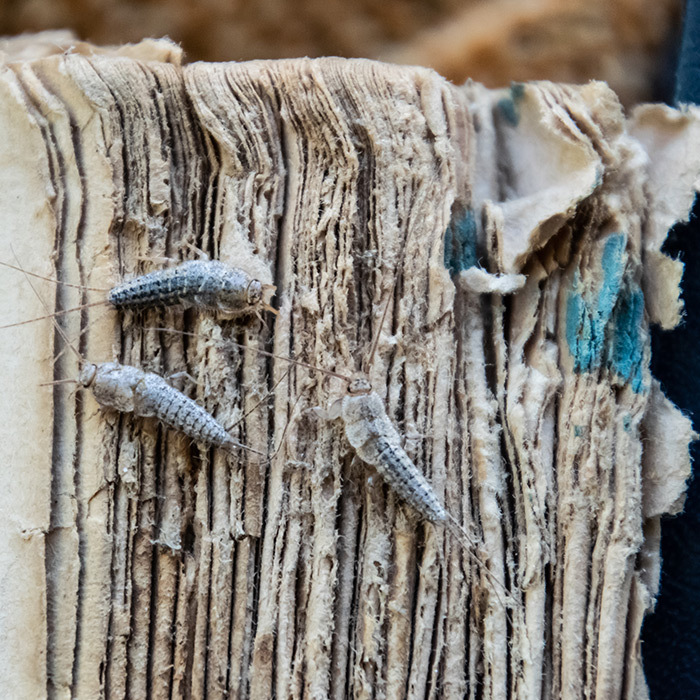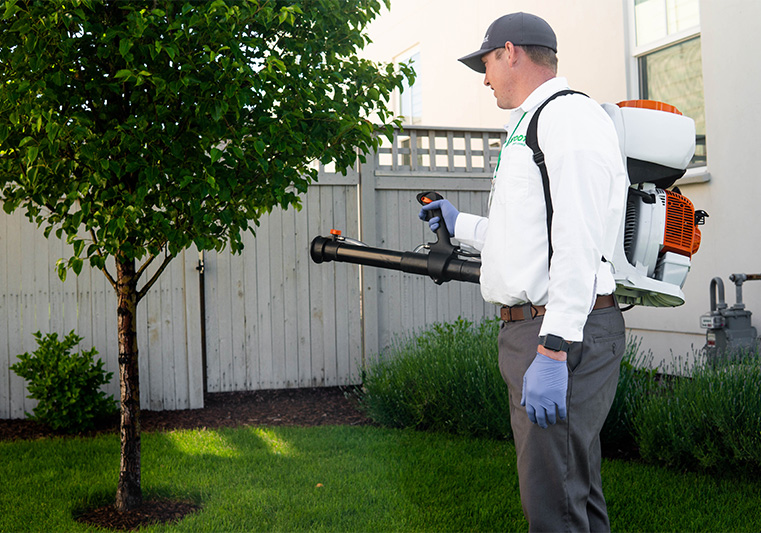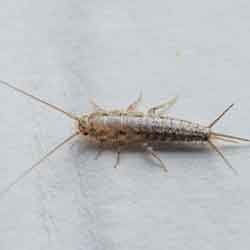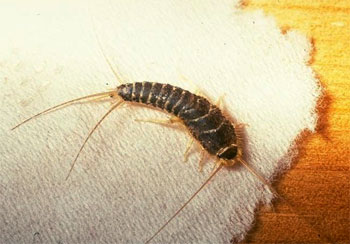How to Get Rid of Silverfish
How to Get Rid of Silverfish Before They Eat Your Belongings
People worry about fire, flood, and vandalism causing damage to their cherished items. Those are valid concerns, and those worries keep insurance companies in business. You may be less familiar with how devastating silverfish can be when it comes to artwork, books, photographs, and other belongings.
Improper storage techniques can encourage this particular type of insect infestation and lead to the total destruction of the items you boxed up and tossed into the basement. Silverfish cause damage to a wide range of items all store in basements and garages. Read on to learn more about silverfish and how to get rid of them before they eat your belongings.
What are Silverfish?
Silverfish are wingless insects about a half-inch long that come in various shades of silver and are common to households. With two long antenna up front and three long prongs coming off their back end, silverfish can look creepy crawling across your basement floor. The good news is that silverfish pose no real threat to people or pets. However, those with asthma or severe allergies can experience respiratory irritation if they are close to silverfish for long periods of time
What Do Silverfish Eat?
Silverfish will eat any materials that contain starch. That means they will happily eat your:
Paper products
Wallpaper
Plaster
Books, including the glue holding them together
Fabrics
Carpet
Flour- and sugar-based food products
Pet food
And much more
How to Get Rid of Silverfish
To get rid of silverfish you need to lower the humidity level of your home and work to remove food sources. They like dark, damp environments, so check for plumbing leaks and run a dehumidifier. Wipe up crumbs immediately and keep trash and clutter from piling up. When silverfish find food is less plentiful, they will move along or die off.

silverfish control
Silverfish are an ancient species of small, wingless insect. Their common name comes from their resemblance to a fish. Silverfish are a common indoor pest year-round, especially in attics and spaces in between walls and under flooring where conditions are moist and warm.
Silverfish eat starchy carbs, including many things you probably didn’t even know were edible!
Glue? Yep, that’s one of a silverfish’s favorite foods! Adult silverfish eat all kinds of starchy human foods as well as paper, cotton, linen, silk and glue. Silverfish seem to especially enjoy the glue that is used to bind books.
habitat
Silverfish are uniformly a silvery gray color and are small, elongated, and mostly flat insects. Their slim bodies allow them to access homes from the outside quite easily. Once inside, silverfish thrive because many of the things they like to eat are common in homes or businesses and they have many available hiding places.
what proof. professionals do to get rid of silverfish
Because silverfish are mostly nocturnal and reclusive, they are difficult to get rid of, even for the seasoned professional. Keeping a consistent barrier on the foundation will help keep silverfish from entering the home. Once they’ve gotten inside, it is always recommended to call a local exterminator.

Common Problems Caused by Silverfish
Seeing a silverfish for the first time can be a bit disturbing. These tiny silver insects are quite strange and look like they would be more at home walking across the surface of some distant planet. While you might be able to stomach their weird and gross nature, you may be wondering if silverfish are a problem in your home.
Paper and Books
Silverfish love climbing into boxes and drawers and feasting on paper materials. They get nutrition from starches and cellulose in paper, boxes, and pictures. When you have silverfish in your home, important documents and treasured memories are at risk. In addition, silverfish can consume the glue and bindings of books, leaving some of your library literally falling apart at the seams.
Food
As with paper, silverfish are fond of consuming starchy foods, but other foods can be at risk due to their packaging. Not only can silverfish contaminate food with germs brought in from the outside, but destruction of food containers can expose food to air, making it stale or inedible.
Fabric
Silverfish can and will eat fabric, especially fabrics made out of natural fibers. As a result, your bed and your closet could be at risk. Not only will silverfish nibble on your sheets and blankets, but they can also eat clothing as well. Silverfish prefer clothing made of cotton or other natural materials, but they will also eat synthetic clothing if enough sweat or dead skin cells are on it.
You might brush off silverfish as a minor nuisance – but why put up with them if you don’t have to? Why allow your clothing, tapestries, bedding, draperies, wallpaper, food products, photos, books, and other belongings to get ruined?

WHAT DO SILVERFISH LOOK LIKE?
Silverfish Life Cycle
Complete Metamorphosis (immatures look the same as adults, no eggs, no larvae stage)
Silverfish Size and Color
1/2″ to 1″ long, with colors ranging from gray, to silver to brown.
Silverfish are gray to brown and all have the same characteristic shape. Their bodies are flattened, long and slender, broad at the front and tapering gradually toward the rear. The antennae are long and slender. Three long, slender appendages are found at the rear of the body. These give rise to the common name, “bristle tails.” All silverfish and firebrats are wingless. The young look like small adults, and their development takes place without metamorphosis
WHERE TO FIND SILVERFISH IN YOUR HOME
Silverfish may be found almost anywhere in a house. However, they usually will be found living close to their source of food. They eat a wide variety of foods containing proteins or carbohydrates. Such things as rolled oats, dried beef, flour, starch, paper, cotton, some synthetic fibers, sugar, beef extract, dead insects, glue, paste and linen are all normal items of their diet. Silverfish can live for long periods of time without food.
WHAT DO FIREBRATS LOOK LIKE?
Most firebrats, except for the common pest species, live outdoors under rocks, bark, leaf mold, in the nests of birds and mammals, or in ant and termite nests. They prefer warm temperatures and are numerous outdoors, especially in the tropics. In the United States, depending on the species, they are usually found indoors in areas associated with heat, such as boiler rooms or moisture, such as near water pipes. They are commonly found in bathtubs where they become trapped while seeking food or moisture. Firebrats and silverfish are most active at night and can run very swiftly.
These insects are primarily a nuisance, but they do consume small amounts of human foods and contaminate it with their body scales and droppings. They can do considerable damage to some natural and synthetic fibers, books and other paper products. Their feeding marks are irregular and often appear as a surface etching which may not even penetrate paper. They may also leave yellow stains, especially on linens.
The silverfish is found in all parts of the United States as well as over much of the rest of the world. The adult’s body is about 1/2-inch long, with a uniform silvery color all over the upper surface. This species prefers temperatures of 70-80 degrees F and moist situations. Eggs are laid in protected situations, such as behind baseboards, and hatch in from 20 to 40 days depending on temperature and humidity.

Silverfish and Firebrats
Silverfish and firebrats can be nuisances in homes, consuming and staining books, fabric, foods, and wallpaper. These insects prefer starchy foods such as flour, rolled oats, paper, or glue.
Significant damage occurs only if a large population is present for a long period. Damaged paper may have notched edges or holes. Book bindings can have ragged edges or marks. Items can be stained by fecal material, cast skins, or scales
Biology and description
Silverfish and firebrats have long, flattened bodies that taper at the end like a carrot. They have chewing mouthparts, long antennae, and three tail-like projections at the end of the abdomen. They have no wings. Both species have fine scales that cover their bodies. Silverfish and firebrat immatures look like the adults, only smaller.
Silverfish and firebrats typically run quickly and are active mostly at night. In homes, they are often found in closets, in attics, or near bookcases; they hide behind baseboards or casings around doors and windows.
Females lay eggs singly or in batches either daily or at irregular intervals, depending on how much food is available. If temperatures are low-about 70 degrees F-the eggs will hatch in about 40 days; in temperatures of about 90 degrees F, they will hatch in about 20 days.